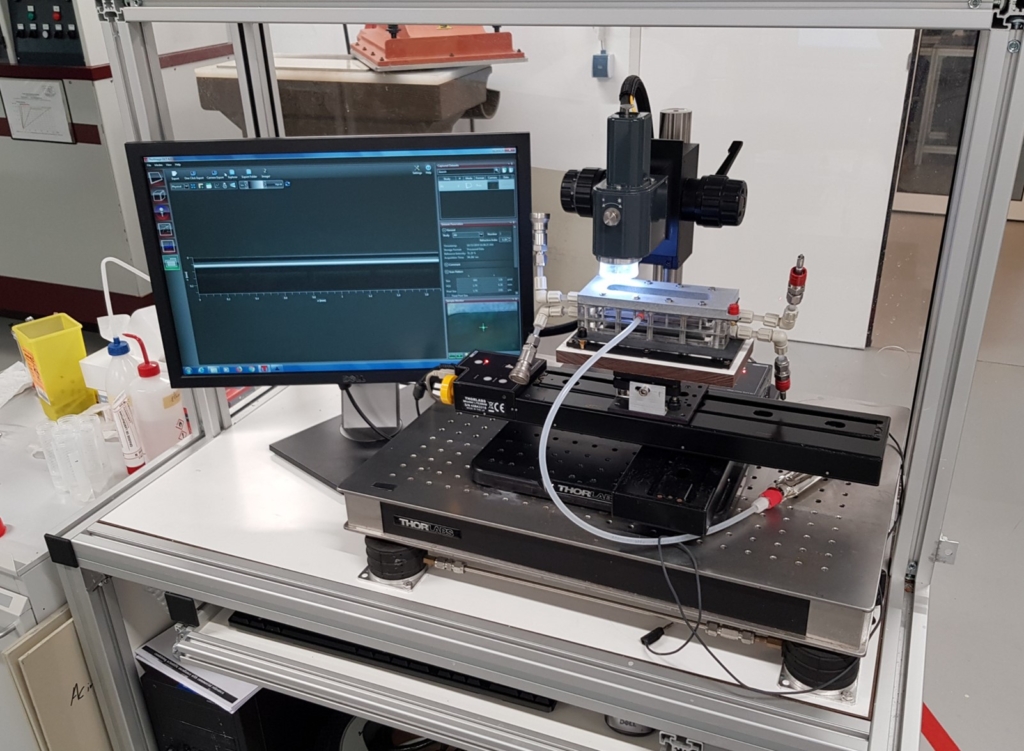Like passing a torch.
When Professor Luís Melo was about to retire, he sparked a passion in PhD-candidate João Pereira. Many biofilm stories he had told, were to become the foundation for the young researcher’s career. Despite spending half a decade on the topic now, João still hasn’t had it with these bacterial sheets. Here’s his story of being starstruck, and the advantages of being able to measure a plate of creatures thinner than a hair’s breadth.
The science behind the people, and the people behind the science
Some people are so passionate about a topic, you can’t help but feel inspired by them. Whether it’s their hobby or their job, it is as if the sparkle in their eyes jumps to evoke devotion in you as you converse.
Emeritus Professor Luís Melo is that someone to João. Stories on the marvelous city-like creations that bacteria form as they group together in biofilm, left a remarkable impression on the researcher. A lasting one at that.
It first inspired him to travel to the Netherlands for his master’s thesis and investigate the topic together with bio-electrochemical efforts in Wetsus. A place he could see himself back in if it were not just for the social activities in the first place.
But after a year of working in industry, that turned out not to be his cup of tea. Instead, the lure of wide-field engineering challenges mixed with discovering new fundamental understandings was beckoning him.
Awaiting João was his original topic. A few years back, he had started developing a method to measure the immensely small thickness of (electro-active) biofilms. By sending out a light source and with the help of the specific return signal, it’s possible to view details on a surface that is a mere fraction of a hair’s breadth. After figuring out the ins and outs of that technique, Pereira and his colleagues could monitor biofilm growth and understand how growth was affected by outside factors.
João, and his predecessors, wanted the bugs to make electricity for them. As, whenever they’re fed waste – or in their view potential food – the bacteria could use that to gain energy in a way. Energy that mostly goes unused now. In wastewater treatment plants, the critters are used to filter out the pollutants and that’s it. But João believes that there’s a greater potential here . There is much more that can be recovered from ‘waste’ – energy for instance.
Given the right circumstances, bacteria can give us out that waste-eating energy in the form of an electrical current. Making a bacterial battery if you will. That could work, was settled. But how to improve it, not so much. “There was a lot to learn on the biofilm,” says João, “and that the thickness was important, as to be expected.”
Normally people try to get rid of biofilms, as they grow in places we don’t like to have them. “The bugs protect themselves by grouping together and forming something akin to little houses or even a small city.” As they clump together, it influences their communal behavior.
“For us, the biofilm thickness is important as growth creates different local conditions inside the biofilm. Having a layer too thick hinders the biofilm to contribute as a whole to the conversion of food into electricity. In other words, some bacteria will have more access to food whereas others will be better positioned to generate electricity.” And yet, there has to be enough bacteria to cooperate. It’s a fine balance.
“We found that biofilms of 10 to 30 micrometers (10 to 30 millionth of a meter) worked the best. Finding something like that as a rule was great as a research output. To have something concrete to share. But also on the more fundamental side, we had nice findings.”
For instance, when microbes form the glue that holds them together and protects them – Extracellular Polymeric Substances or EPS , or when they form their internal ‘fat’ reserves made from PolyHydroxy Alkanoates – PHA. The method taught the researchers that intermittent breathing and fasting can steer the production of one compound over the other: EPS, externally, when there’s an excess of food, and PHA internally, if you push them to starvation. “They are smart bugs, and we need to understand how they respond to external inputs. Just like people in times of the pandemic when they are afraid that they’re going to run out of produce, they start stockpiling – empty out the shelves.”
Now telling his own stories, João is far from done with his fascinating biofilms. Though, he wishes to pursue a clearer path of application. “I think I am done with academia for now, but who knows…” Maybe Professor Pereira could pass the biofilm baton in his turn again.
On September 11, at 11:00hrs in the Omnia Auditorium (Wageningen), João Pereira will defend his thesis “Biofilm growth and electron storage at anodes”.
